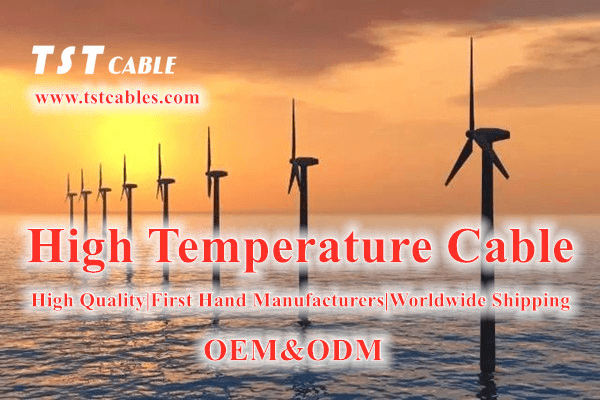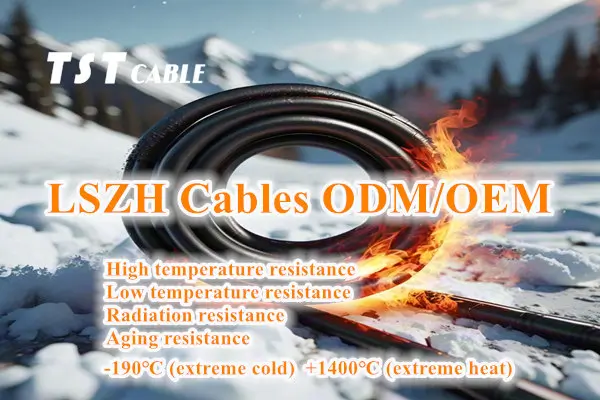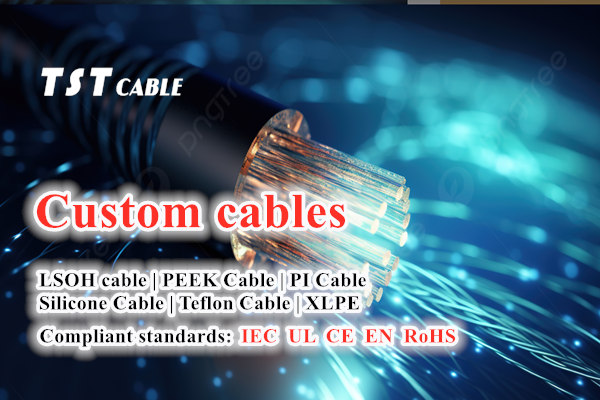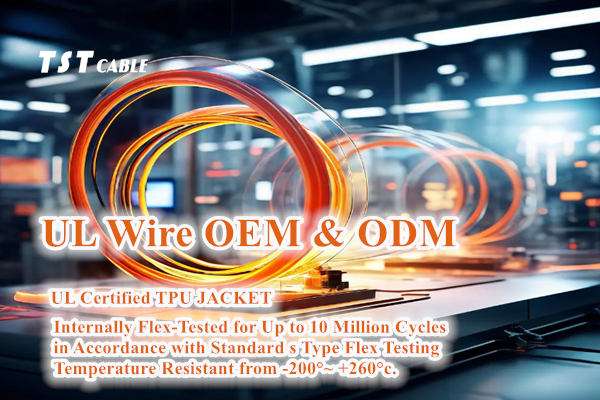As a Nordic country, Denmark enjoys a high reputation in the field of power cables for its advanced technology and high-quality products. Denmark has high standards of quality control and technological innovation in power cable manufacturing.
High-voltage cable solutions are a highly comprehensive professional field, which not only involves knowledge of electrical engineering, but also covers knowledge of multiple disciplines such as materials science and mechanical engineering. Choosing the right high-voltage cable solution is extremely important for ensuring the safety, reliability and economy of the power system.

Features of TST CABLES Danish power cables
- High quality standards: Power cables produced in Denmark usually follow strict European standards (such as EN standards), ensuring the high quality and reliability of the products.
- Environmental awareness: Denmark is at the forefront of environmental protection, so the cables it produces often focus on the use of environmentally friendly materials and minimize the impact on the environment during the production process.
- Technological innovation: Danish companies tend to adopt the latest technologies to improve cable performance, such as improving insulation materials to increase efficiency and safety, and using smart grid technology to achieve better power management and monitoring.
- Adaptive design: Considering Denmark’s variable climatic conditions (especially the long and cold winters), Danish power cables are designed to work stably under extreme weather conditions.
- Wide application: Danish power cables not only serve the domestic market, but also have a certain share in the international market, and are used in many fields such as urban power grids and offshore wind farms.
Next, TST CABLES will give you a detailed explanation of the relevant information about high-voltage cable solutions in Europe and Denmark.
High Voltage Cable Solutions generally refer to the design, manufacture and installation of cables and related components used to transmit high-voltage electricity. TST CABLES high-voltage cable solutions are designed to ensure that electricity can be efficiently and safely transmitted from power stations to places where electricity is needed, such as cities, industrial areas or large facilities. The following are some key aspects of high-voltage cable solutions:
- Cable design
Insulation materials: High-voltage cables use high-quality insulation materials to prevent current leakage, commonly used ones include cross-linked polyethylene (XLPE), ethylene propylene rubber (EPR), etc.
Conductor materials: Aluminum or copper are generally used as conductor materials because they have good conductivity.
Structural design: In order to withstand higher voltage levels, high-voltage cables usually have more complex structures, such as layered shielding, armor protection, etc. - Voltage level
High-voltage cables can be divided into different voltage levels, such as medium voltage (MV, Medium Voltage, usually refers to 1kV to 35kV), high voltage (HV, High Voltage, usually refers to 35kV to 230kV), and extra high voltage (EHV, Extra High Voltage, usually refers to 230kV or above). It is crucial to choose the right voltage level for different application scenarios. - Installation and maintenance
Laying method: Depending on the specific environmental conditions, underground laying, underwater laying or overhead lines can be selected.
Monitoring system: Modern high-voltage cable solutions often include real-time monitoring systems to detect the operating status of the cable and find potential fault points in time.
Maintenance plan: Regular inspection and maintenance are the key to ensuring the long-term stable operation of high-voltage cables. - Application areas
Urban power grid construction: With the acceleration of urbanization and the increase in demand for reliable power supply, high-voltage cables are widely used in urban power grid transformation and upgrading projects.
Offshore wind farms: Submarine high-voltage cables are often required to transmit the electricity generated by offshore wind turbines to land.
Industrial applications: In some large factories or industrial parks, high-voltage cables are also needed for power distribution. - Environmental adaptability
High-voltage cable solutions also need to take into account the impact of various harsh environmental factors, such as extreme temperature, humidity, corrosive soil, etc., and take corresponding protective measures. - Technological progress and innovation
Superconducting technology: Although it is still in the research and testing stage, the application of high-temperature superconducting materials is expected to greatly improve the efficiency of power transmission and reduce energy loss.
Smart grid integration: With the development of smart grid technology, high-voltage cables are not limited to simple power transmission, but also need to have data communication capabilities to facilitate remote monitoring, fault diagnosis and other functions.
Environmentally friendly materials: In order to respond to global environmental protection requirements, the development of more environmentally friendly and recyclable insulation materials has become an important direction for the industry. - Safety and reliability
Fire resistance: For certain specific applications (such as in tunnels), cables are required to have excellent flame retardant or fire resistant properties.
Electromagnetic compatibility (EMC): When designing high-voltage cables, it is necessary to consider their electromagnetic interference effects on the surrounding environment and other equipment, and take shielding measures when necessary.
Earthquake-resistant design: In earthquake-prone areas, the cable must be designed to withstand a certain degree of vibration without damage. - Economic benefit analysis
Life cycle cost: When evaluating the total cost of a high-voltage cable project, in addition to the initial investment, factors such as operation and maintenance costs and expected service life should also be considered.
Energy saving and consumption reduction: The use of efficient cables can reduce power loss, thereby saving energy expenses and reducing carbon emissions. - Regulatory compliance and standardization
The design, manufacture and installation of high-voltage cables must comply with relevant international or national standards and regulations, such as IEC standards, IEEE standards, etc.
Different countries and regions may have different certification requirements, and exported products need to meet the laws and regulations of the target market. - Market trends
Renewable energy access: With the large-scale development and utilization of renewable energy such as solar energy and wind energy, how to effectively connect these distributed power sources to the main grid has become an important issue.
Growing urbanization demand: The accelerated urbanization process caused by population growth has prompted the upgrading of urban power grids and increased the demand for high-voltage cables.
Update of old infrastructure: Many countries are facing the problem of aging existing power facilities and need to carry out large-scale transformation and upgrading, which also brings new opportunities to the high-voltage cable market.
High-voltage cable solutions involve many aspects, from technological innovation to environmental protection, from safety considerations to economic benefit analysis, all of which need to be considered comprehensively. In the face of the ever-changing technological environment and social needs, continuous attention to industry trends and technological progress is essential for developing effective high-voltage cable solutions.
Related Danish cable companies
TST CABLES, a cable company headquartered in Shenzhen, China, focuses on providing energy transmission cable solutions, including power cables,LSZH cables, high-voltage cables, medium- and low-voltage cables, nuclear power cables, railway cables, aviation cables, submarine cable systems, etc.
Play an important role in promoting the transition to a more sustainable energy future in Denmark and the world. Through continuous R&D investment and technological innovation, they provide the market with efficient and reliable power cable solutions.
If you are looking for reliable and stable Danish power cable products or suppliers, it is recommended to contact the cable engineer of the TST CABLES company mentioned above by email to obtain the latest product information and apply for free samples.
Also available in:
English




